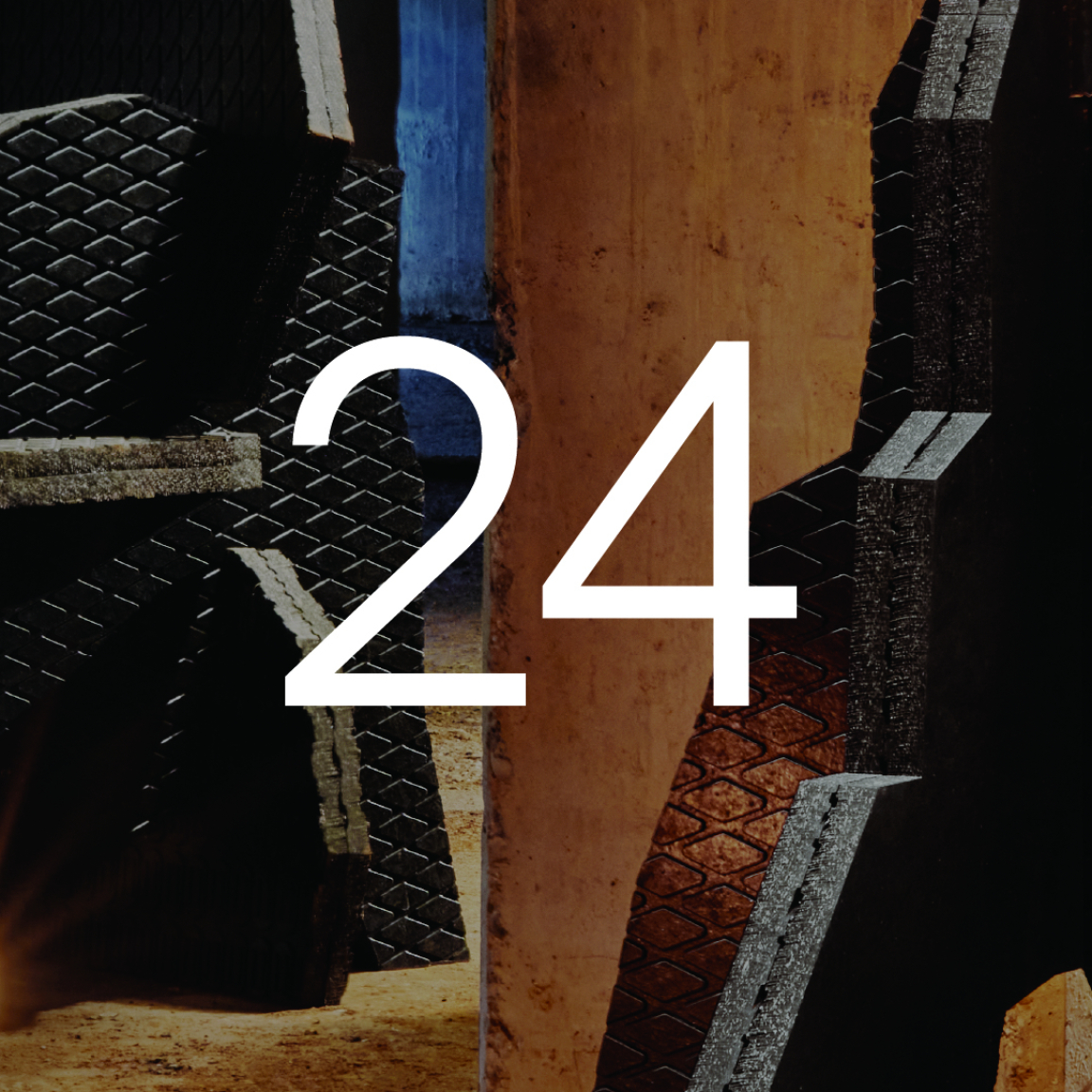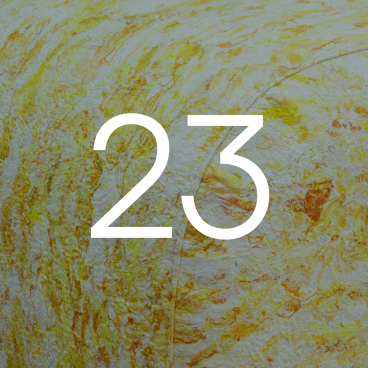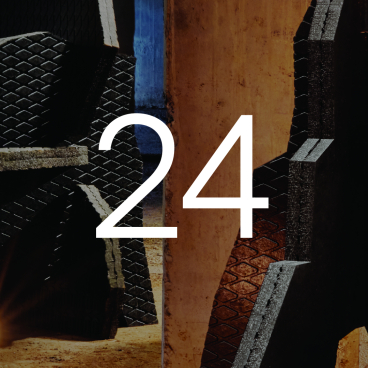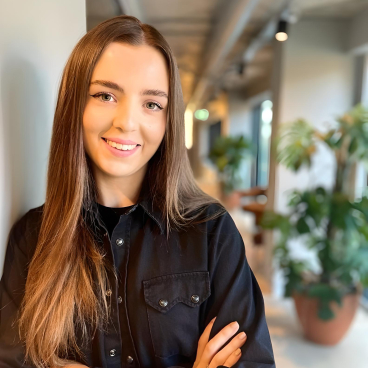24 bio and by-product based materials for 2024.
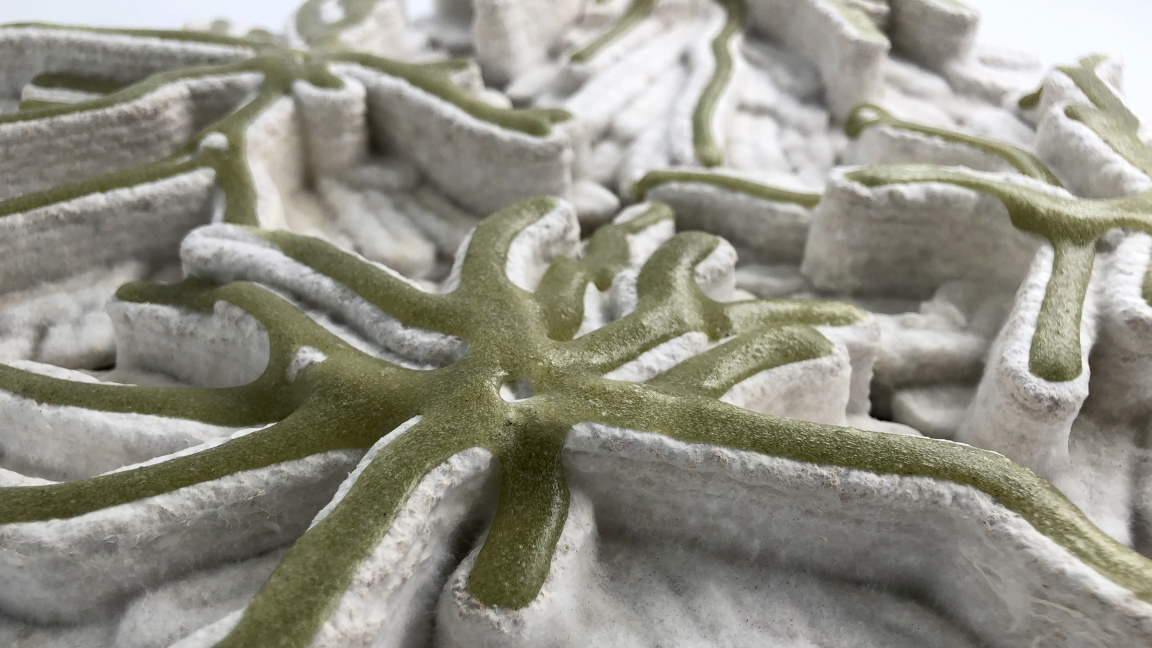
bioMATTERS
Since Material Source first started, we’ve given a platform, and a voice, to those blazing a trail in developing bio and by-product based alternatives to the materials we rely upon every day.
We feel it’s our responsibility to bring new, innovative materials of this nature to the fore. It’s in our DNA.
Throughout December, we have done just this. Not all of the materials we have shared are market ready. Some are in their embryonic stage. But in highlighting their possibilities, our hope is that they – and others like them - will go on to be manufactured and secure the EPDs and certifications needed for specification, to help support a brighter future.
Moving the sustainability agenda forward, here are 24 bio and by-product based materials for 2024.
1. Rosy Napper - ReCinder.
ReCinder is a 100% recycled material made from discarded broken ceramic and waste ash that has been diverted from landfill.
A greener, waste-based alternative to industrially processed clay, ReCinder is self-glazing, eradicating the need for conventionally mined and environmentally damaging raw materials often used in ceramic glazes.
The material is also versatile. As well as being suitable for tiling, furniture and tableware, most importantly it can be used for lighting due to its unique translucent quality.
ReCinder is one of the only 100% recycled ceramic materials currently on the market capable of translucency.
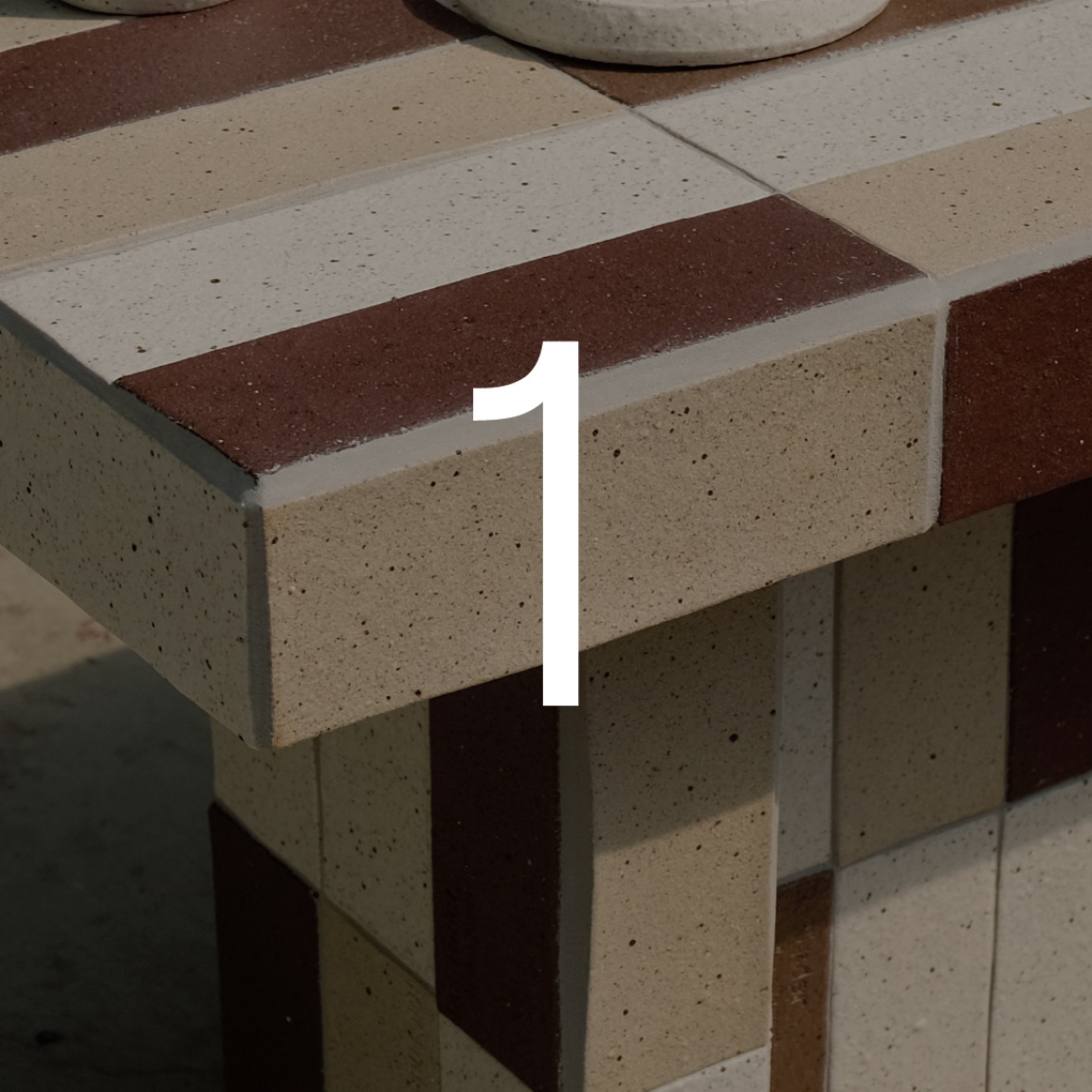
2. MABE Bio - Angico bioleather.
MABE Bio is a cleantech startup based in São Paulo, Brazil, that combines technology and nature to create regenerative materials for different industries.
By investigating the potential of Brazilian biodiversity, the team has created its first material, Angico bioleather.
Employing a systemic approach, MABE Bio is developing plant-based material from native and abundant Brazilian species, thus contributing to reforestation projects nationwide and strengthening the local economy.
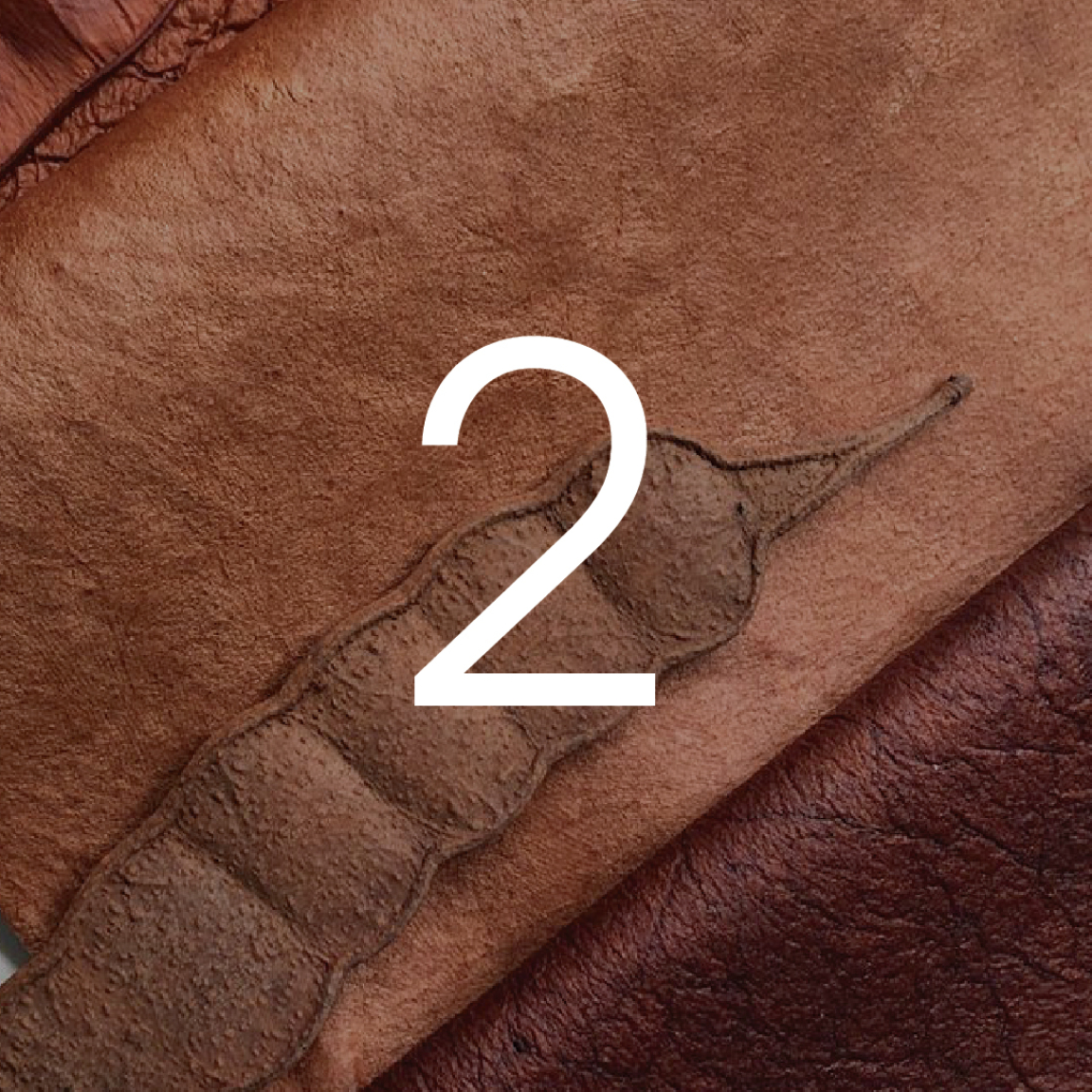
3. Re-Mat – via IAMMI - Ecofoam.
Ecofoam is a new material composed of 100% recycled polyurethane foam.
These recycled foam bricks were commissioned by IAMMI for the exhibition, ‘Nothing Happens if Nothing Happens’ at Bargehouse, Oxo Tower, London. They were produced by the Italian startup Re-Mat, encapsulating the essence of a ‘soft city’ while integrating the principles of regeneration.
With a focus on foundations, the installation embraced sustainable design practices, while seeking to craft an engaging and immersive experience.
Ecofoam serves as a testament to the potential of recycled materials and sustainable design practices to shape a more harmonious and regenerative urban environment.
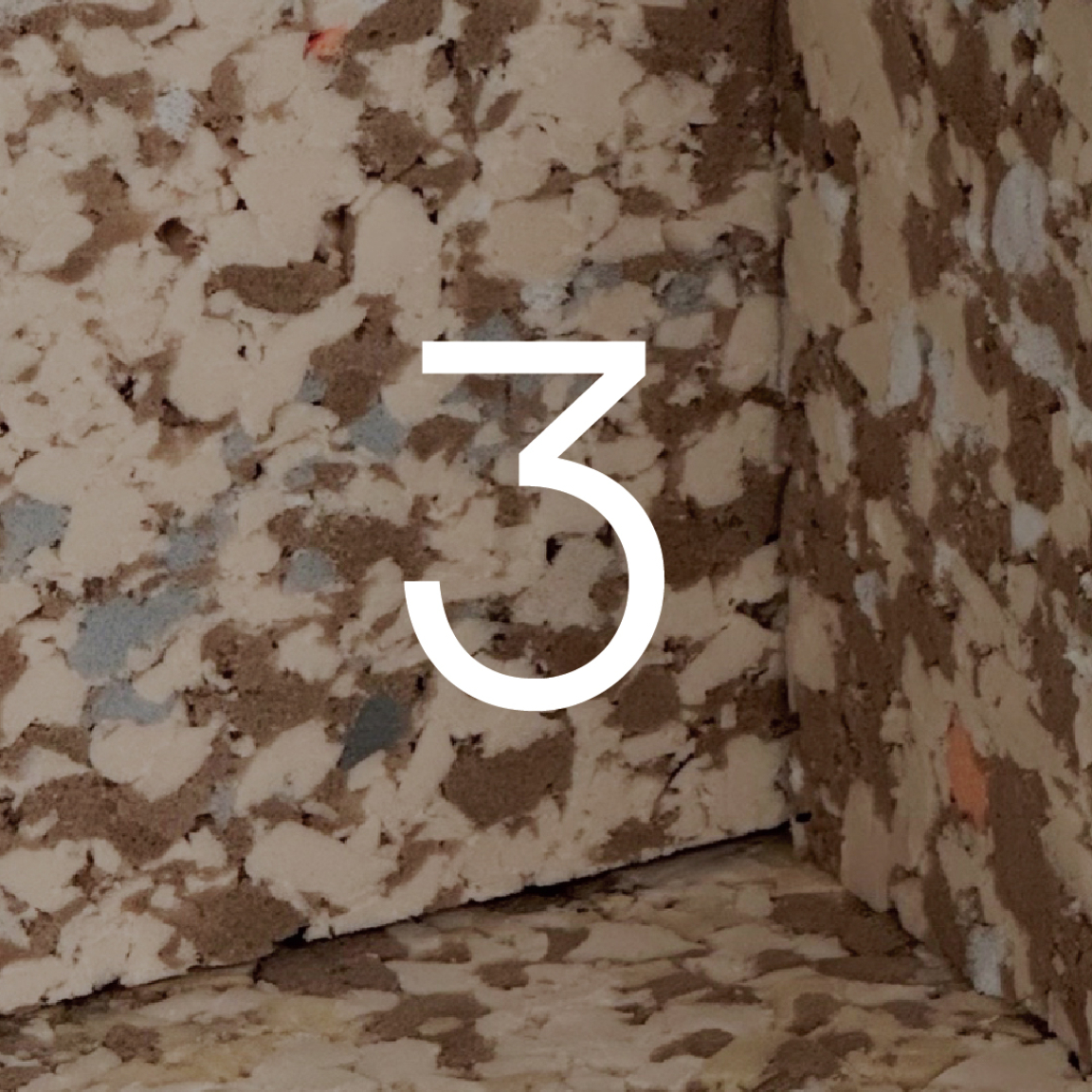
4. Caracara Collective - Reclaim.
Caracara Collective is an experimental design studio based in Helsinki, Finland, that envisions a future without waste where humans and non-humans can co-exist and thrive.
Their practice aims to utilise local waste streams to create 100% organic, biodegradable and durable materials that could be implemented in the fields of design, art & architecture.
Reclaim is a lampshade range made from orange peel and pine needles. The orange peel comes from the juice machines of a local supermarket, and the pine needles are collected from Christmas trees that local residents discard each year.
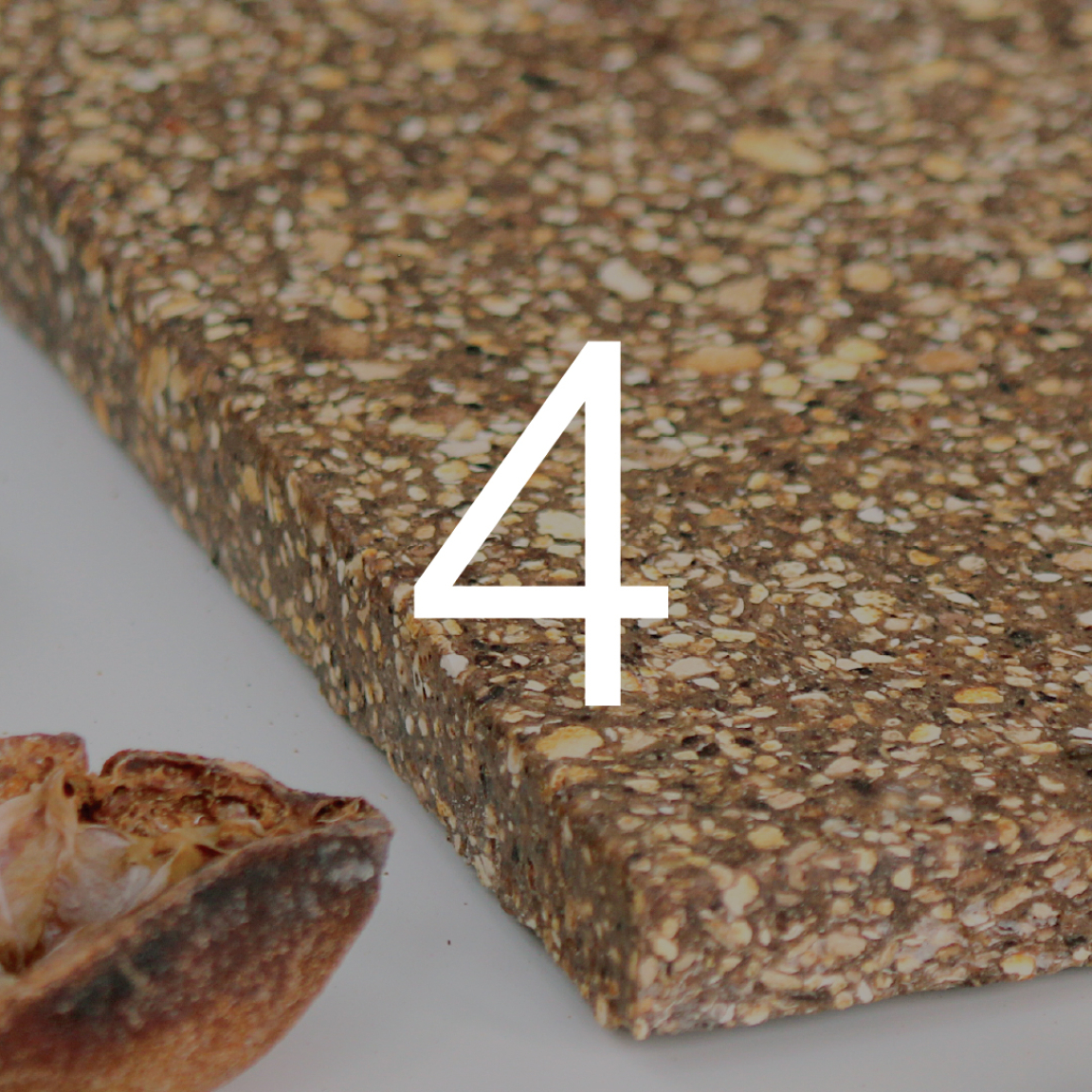
5. Atelier Barb - The Bio Series.
Atelier Barb is a design studio founded by Safiye Ozkan and Haydar Bayindir, with a focus on creating innovative and responsible materials.
Their aim is to encourage their audience to interact with waste streams and abundant ingredients in an unbiased manner.
The Atelier Barb Bio Series comprises a range of products and materials crafted from organic waste and natural binders. These mediums include eggshell waste, non-edible parts of the artichoke plant, rock salt, plant-based dyes, algae, and starch-based binders.
The resulting material is both sturdy and durable, making it ideal for creating functional art objects, tableware, wall tiles, furniture, and other surfaces designed for longevity and eventual decomposition.
All objects are crafted with regenerative materials and renewable resources, with the least amount of energy possible. Designed, developed and produced in-house by Atelier Barb.
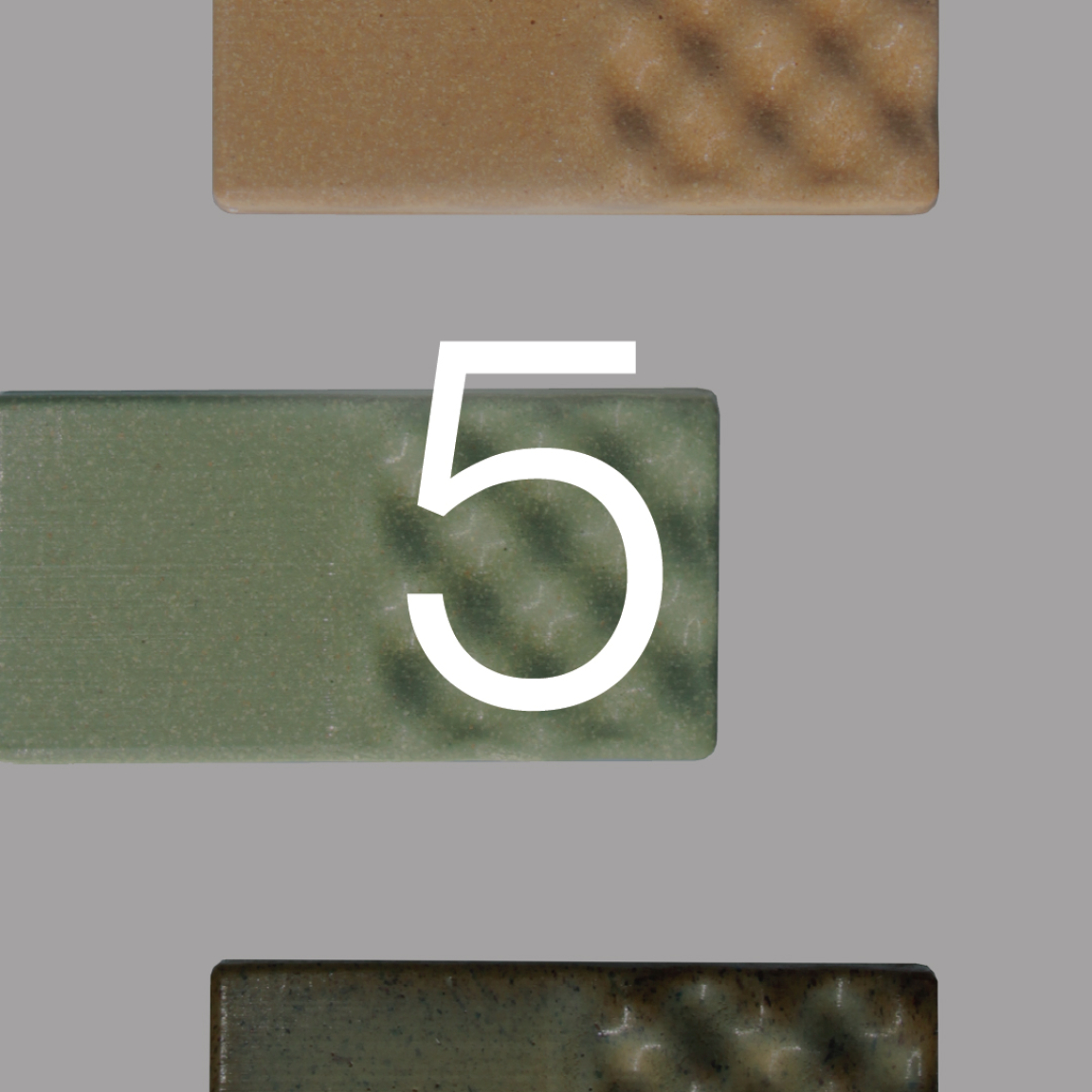
6. Margent Farm - Corrugated hemp fibre panel.
Margent is a hemp farm located in Cambridgeshire England. Its name comes from the margin surrounding its 50 acres of arable fields which acts as a protection zone and natural habitat for wildlife.
The team is committed to nurturing the topsoil, air and water by practicing organic and regenerative farming methods. As hemp captures carbon as it grows, absorbing it from our atmosphere and converting it to biomass, Margent uses that ‘locked-in’ carbon for product prototypes it hopes will inspire a low impact circular economy.
In a project with Studio Propolis, Margent Farm's corrugated hemp fibre panels were used to front a collection of cabinets. As with many of Studio Propolis’s projects, they start with what they have at hand or can be salvaged. As such, the proportion of the pieces have been defined by the up-cycled corrugated hemp panels from Margent’s early prototypes as well as off-cuts from their external wall cladding (used on the Flat House) which have been set in solid ash frames.
Another important consideration in the design was to treat the cabinets as freestanding vs built in pieces so that they can be moved to a different location or easily be reappropriated in the future if need be.
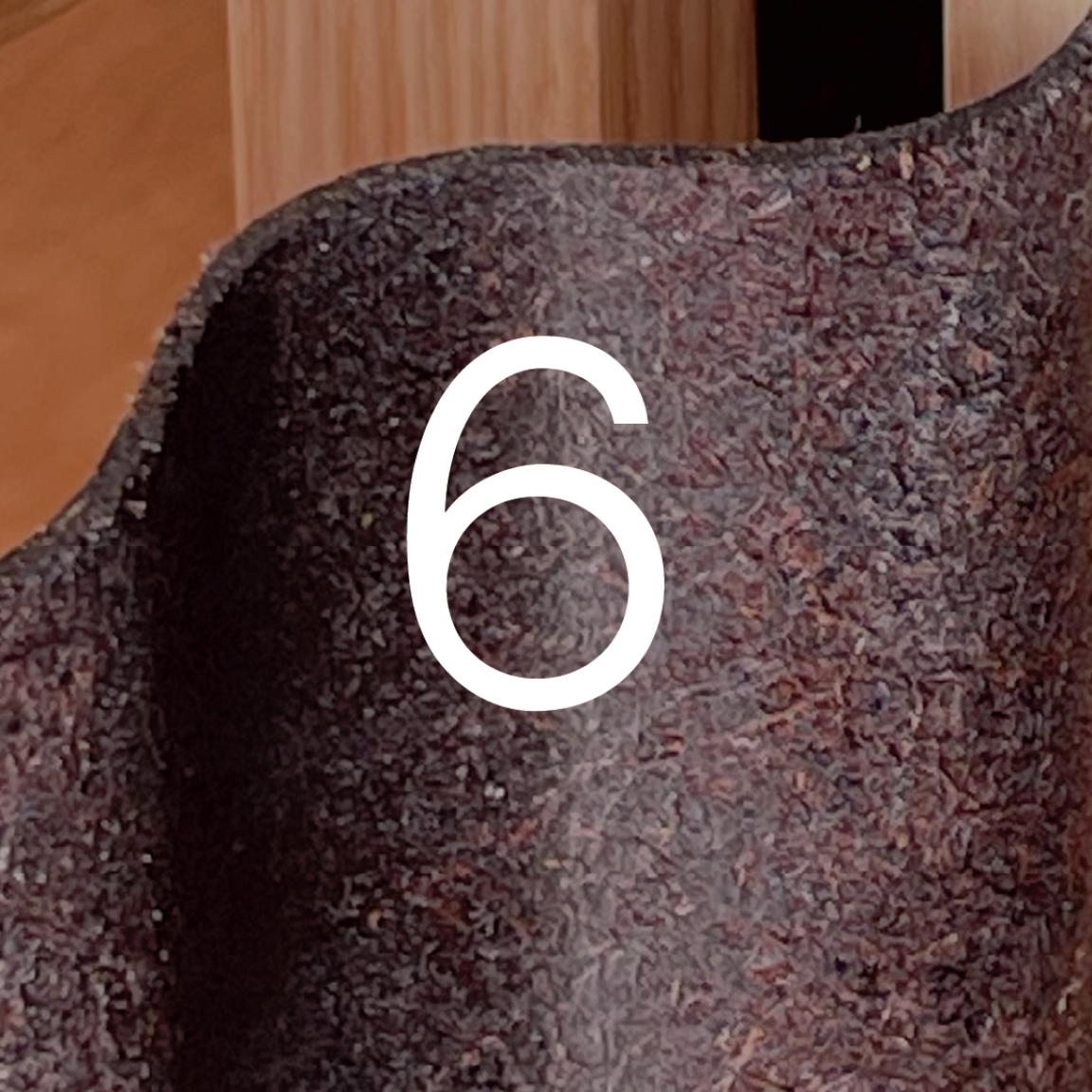
7. Kukka & Studio Ilfa Siebenhaar - Living Colour.
Living Colour is a collective biodesign project exploring the possibilities of designing textiles with pigmented bacteria.
The design unfolds through the cultivation of bacteria on textiles, revealing organic growth patterns that echo the distinctive lifecycle of each dye batch.
Living Colour advocates sustainable transformation and creates visual narratives that infuse depth into the design process, resonating with both industry and consumers. "Growing bacteria as a dye factory can lead to a more sustainable way to colour the world."
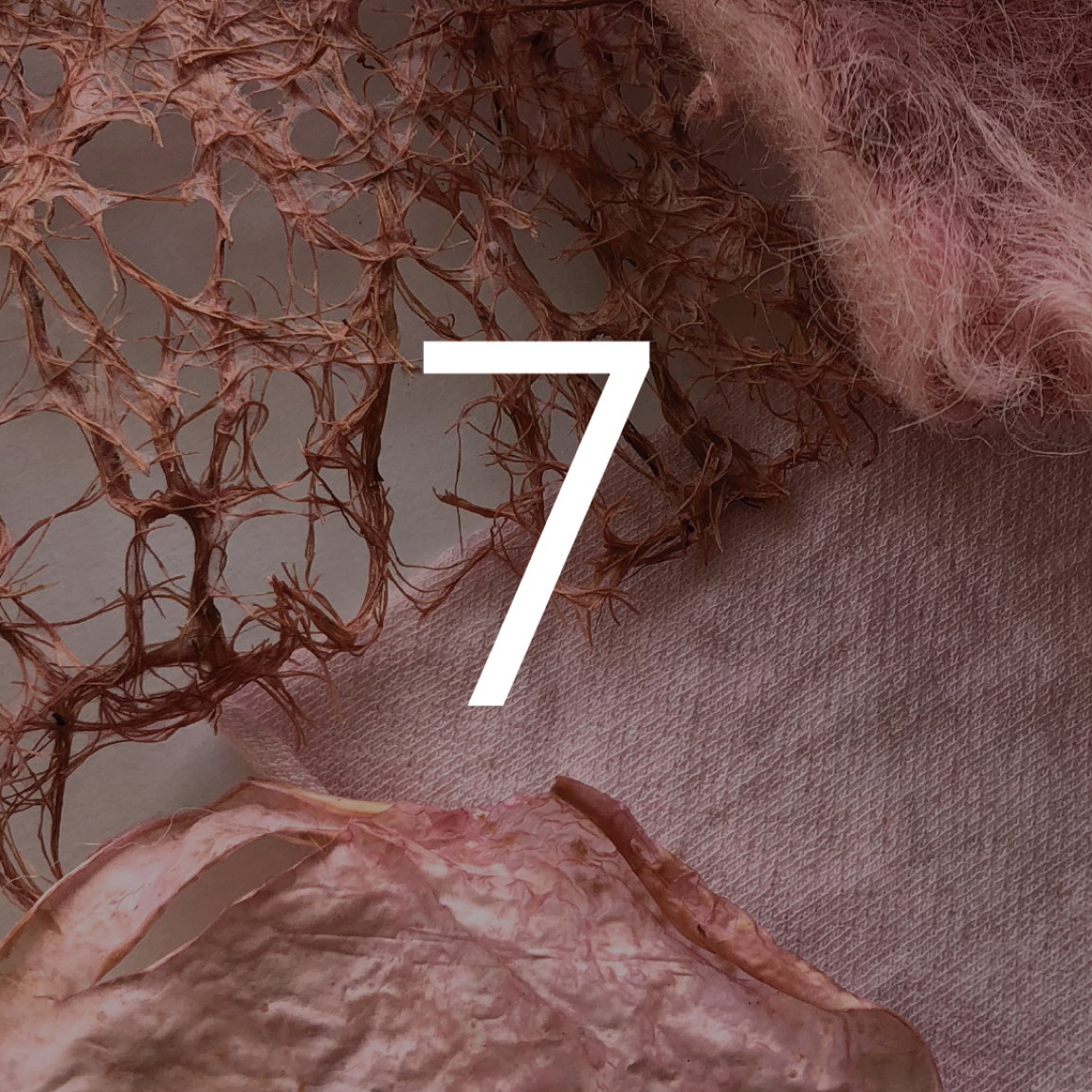
8. Nienke Hoogvliet - Zeefier.
Established in 2020, Zeefier is a startup based in The Netherlands, researching and developing natural dyes made out of seaweed and its waste streams.
During one of her many walks on the beach, artivist and creative founder Nienke Hoogvliet picked up some seaweed. It got her thinking. Since 600 B.C. we have been dyeing naturally with plants, insects, wood, and other products. What if seaweed could help fight the pollution of the textile industry?
While the benefits of working with a sea product were still relatively unknown, Nienke started to experiment with seaweed dyeing. Over the course of 10 years (and continuous experimenting), she literally wrote a book on the subject. 10 years ago, all her actions and experiments were brought to life in (amongst other objects later on) a very special rug.
Throughout the years, this rug has been showcased in museums around the globe: from Centre Pompidou (Paris) to Central Museum (Utrecht), and from Cooper Hewitt Design Museum (New York) to the Victoria & Albert Museum (London).

9. Georgie Gerrard - Mycelium pieces for big. store by Nina+Co.
Georgie Gerrard is a creator of sculptural objects made from mycelium. For her most recent project, she crafted pieces for the bio-based interiors of London's big. store by Nina+Co.
The mycelium pieces were commissioned to work in conjunction with the selection of natural and up-cycled materials in the store concept, in particular, the recycled gypsum columns and the reclaimed travertine tops, each providing a ‘stone-like’ effect, despite being composed of entirely different materials.
The mycelium columns are grown around a central reclaimed pipe, which are exposed in sections of the window display columns, visually connecting them with the metal surface they are supporting.
The mycelium is a 100% bio-based, biodegradable substrate, that also serves to display both the sculptural and functional qualities that this material can possess within an interior setting.
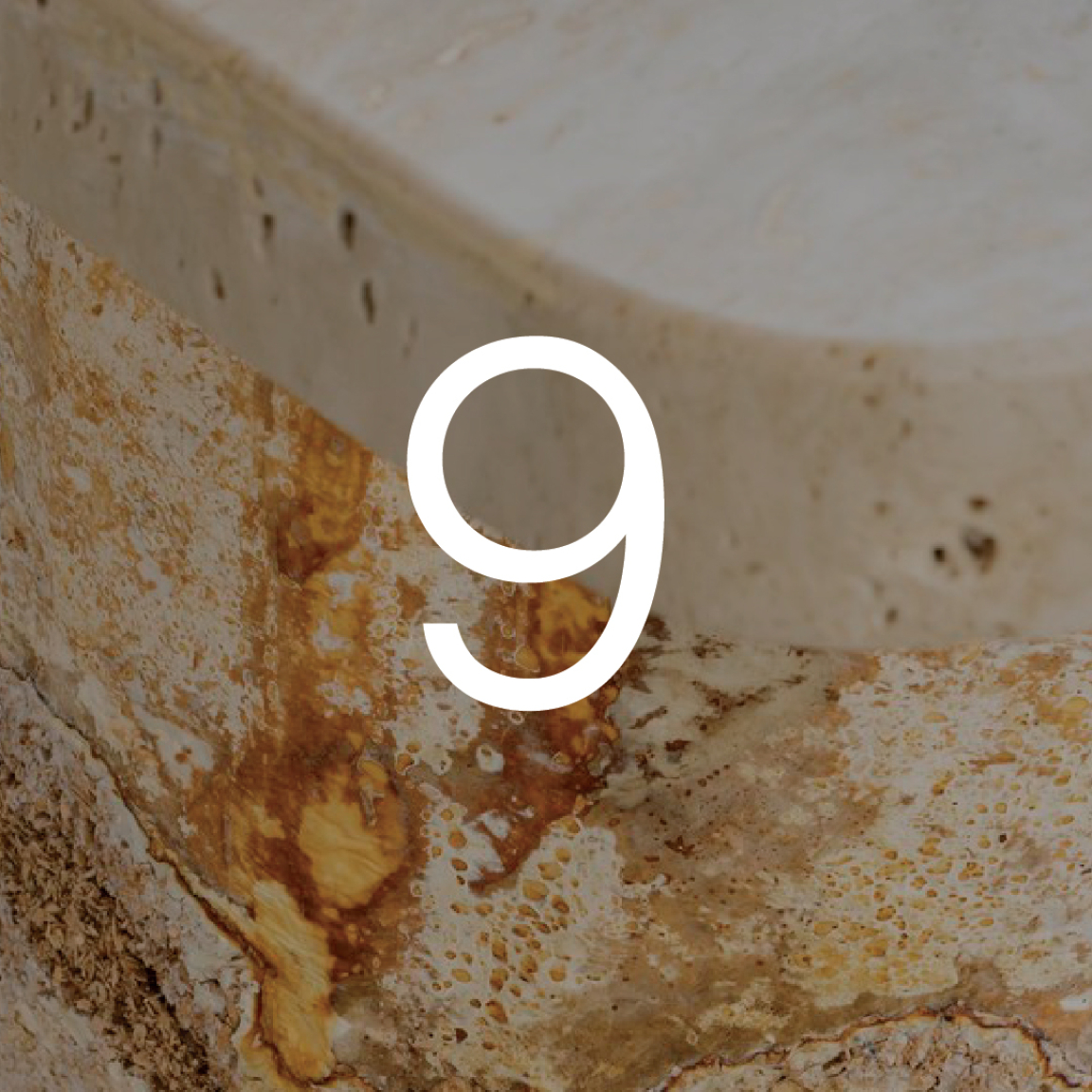
10. bioMATTERS - MYCO‐ALGA.
MYCO-ALGA is a non-repetitive interior tiling system, fabricated by 3D printing mycelium, algae, and upcycled waste materials.
Developed by bioMATTERS, a New York City and London based biodesign studio, the tiles are 100% biodegradable, offering sustainable, ecological, and circular design solutions for enhancing interior spaces.
They are designed with computational algorithms, 3D printed, grown, and enriched with bio-pigments to add natural colour.
The finished tiles express the natural off-white colour of mycelium and light green algae, and have a soft, velvet-like texture and tactile quality.
Each tile is unique, resulting in continuously varying patterns when assembled across a larger surface.
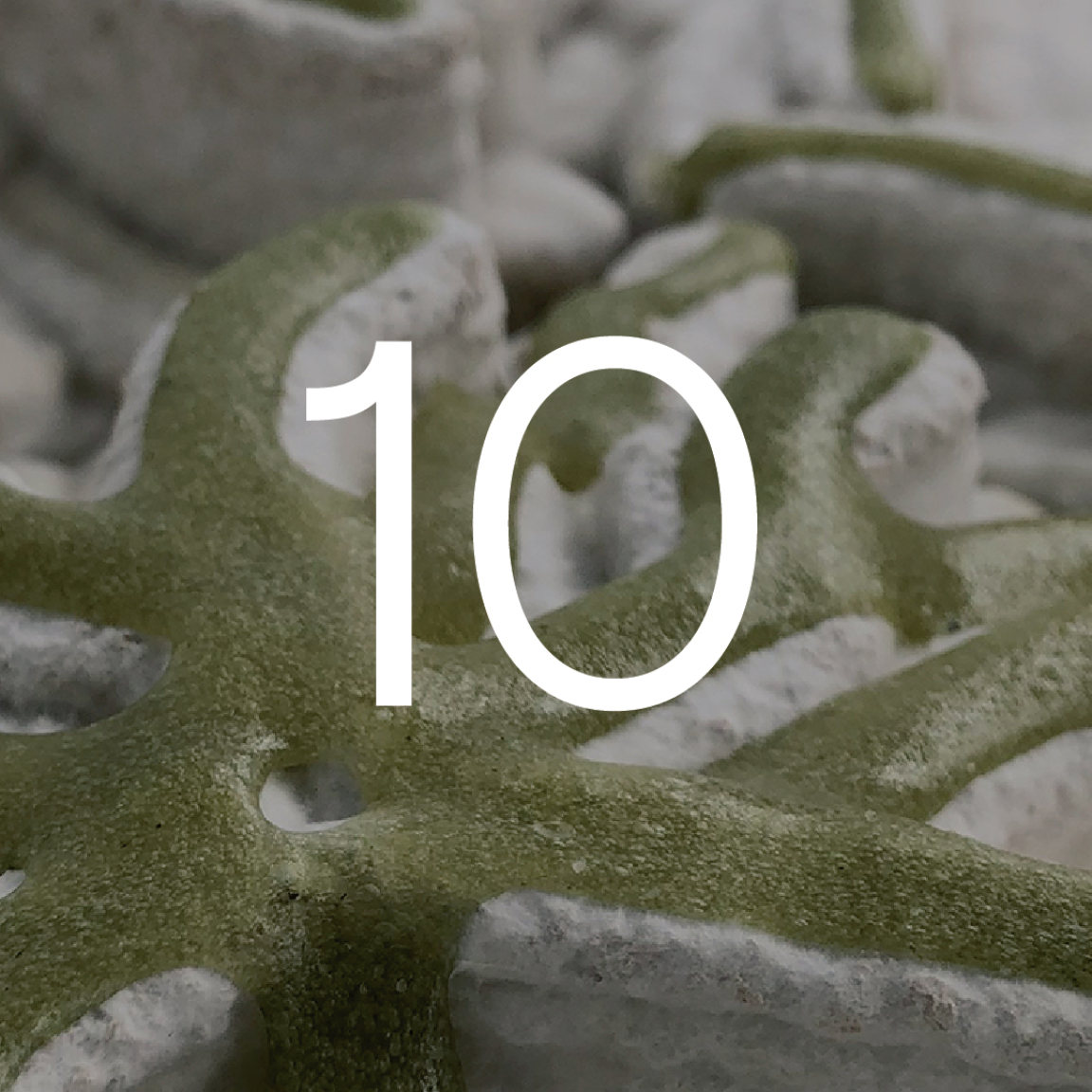
11. Hannah Elisabeth Jones - 100% Grass Materials.
Hannah Elisabeth Jones is a multidisciplinary artist-designer specialising in biomaterials and organic colour.
Her latest project comprises regenerative materials made entirely from grass cuttings sourced by hand within North-West England. The materials do not contain any synthetic or natural binders. Unlike most other plants for fibres and trees for paper pulp, grass is a locally abundant resource and does not die when cut – but continuously grows. Once used, the materials can biodegrade and contribute to soil organic matter.
The fibreboard, paper and cordage have different properties and therefore could have varied applications. As part of her PhD research, Hannah will be testing the mechanical properties of the fibreboard in her University to compare against current single-use inner packaging materials like polystyrene and moulded cardboard.
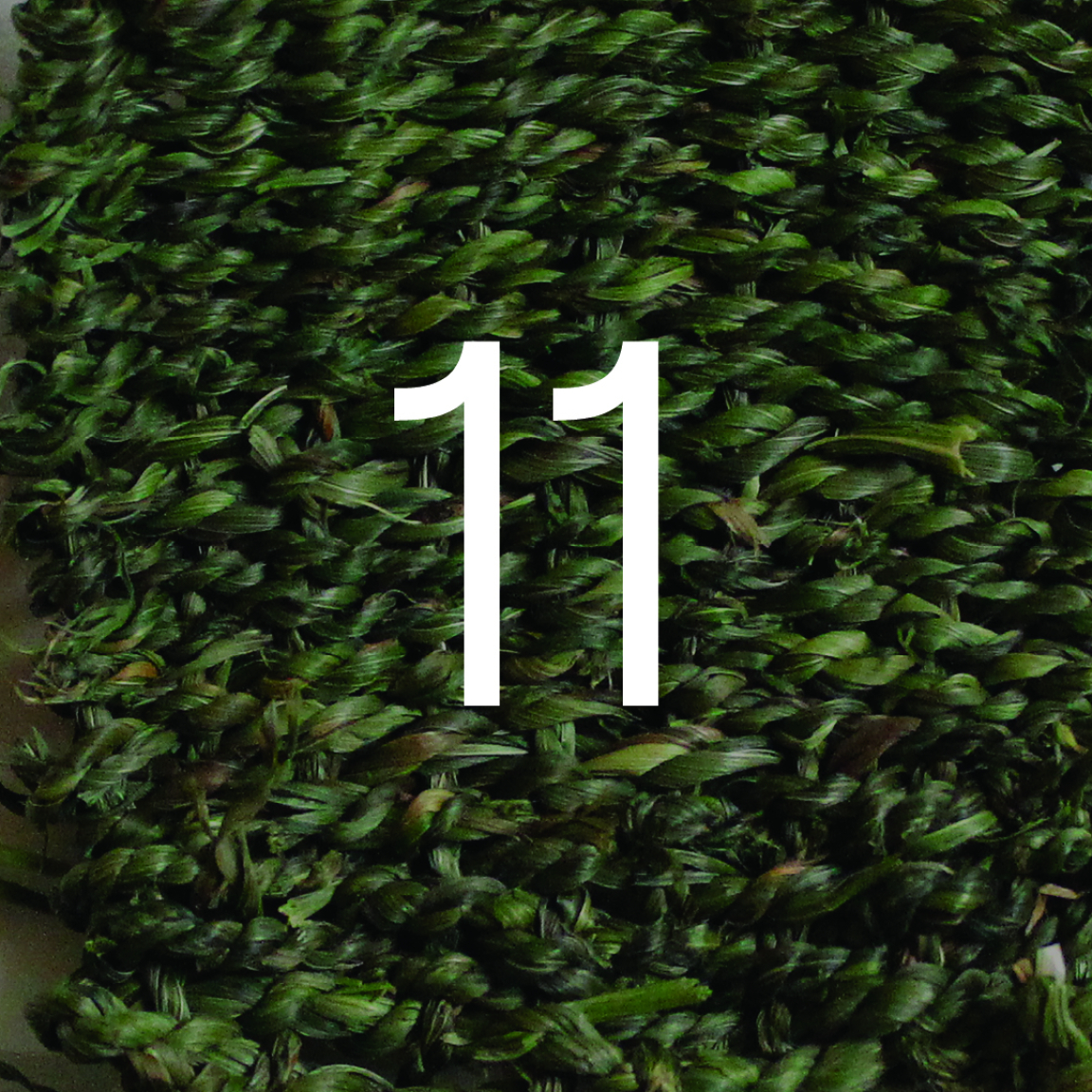
12. Kenoteq - K-BRIQ.
Kenoteq was established in 2019 as a spin-out from Heriot Watt University in Edinburgh on the back of nearly a decade of R&D into the circular, closed loop, ultra low carbon K-BRIQ.
The K-BRIQ is made from near 100% recycled waste. The majority of the waste is from certified inert recycled aggregates (rubble from old brick, old stone, and old mortars) together with recycled gypsum from waste plasterboard. "We also add recycled pigments to colour the product and a dash of our proprietary binder (our “secret sauce”!) to help bind the product."
Kenoteq works with two local waste management partners who collect, sort and process construction and demolition waste to strict protocols and provides it as certified inert processed waste streams to manufacture into the K-BRIQ and K-SLIPs at the company's cleantech factory outside Edinburgh.
A patented low energy production process uses hydraulic compression and is efficient, creates no waste and uses only 10% of the energy of traditional brick production. The whole production process takes only 24 hours, significantly quicker than traditional brick production. Importantly it does not fire the products, allowing for an enormous energy saving and reduction in carbon emissions.
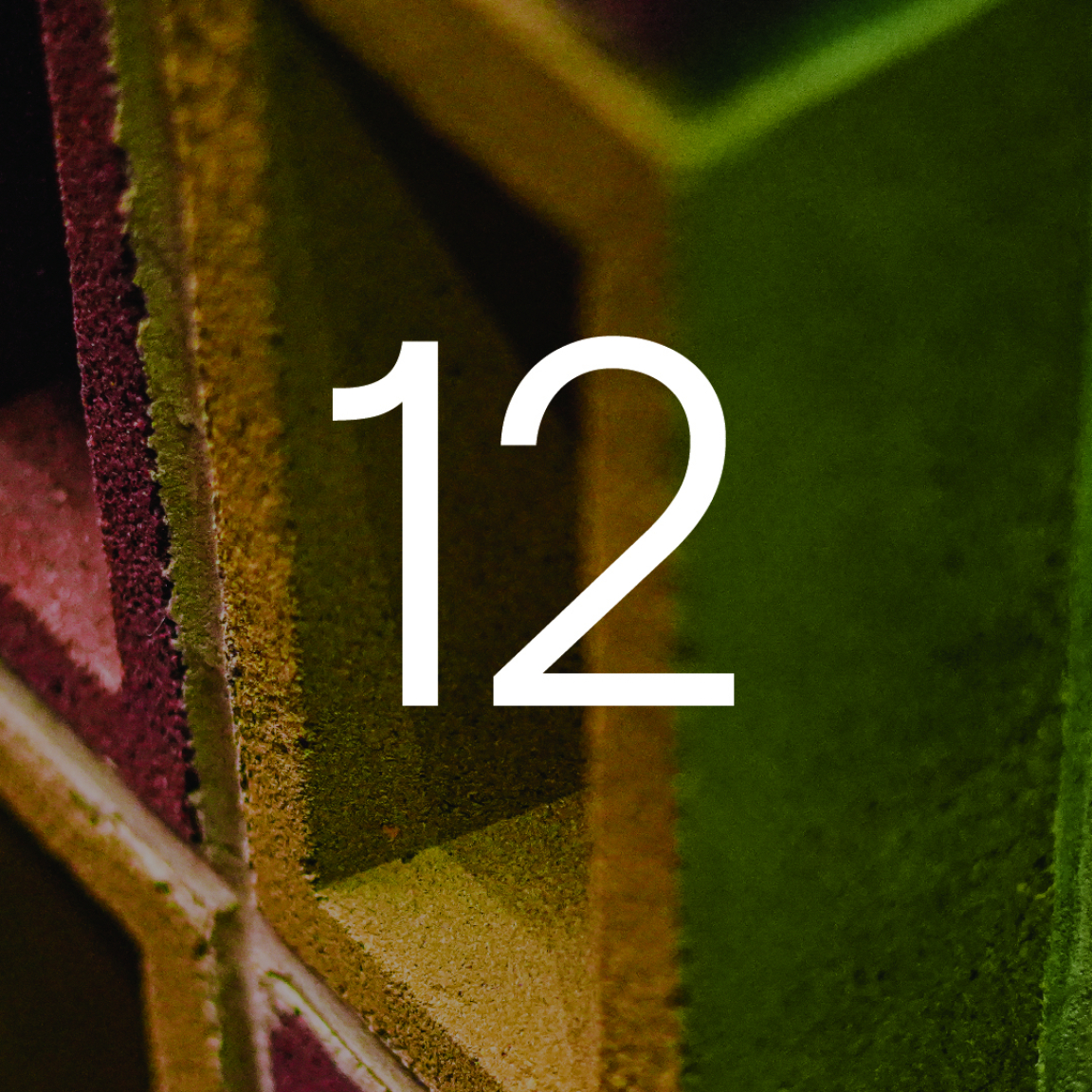
13. Ori Orisun Merhav - Made by Insects.
Made by Insects delves into insect-produced polymer 'lac,' challenging its conventional role as a coating material, pushing it into new exciting realms.
As synthetic polymers diminish the demand for the natural material, designer Ori Orisun Merhav embarked on a journey to redefine its future. Inspired by the architectural prowess of insects forming their own cocoons, Orisun began shaping the material in three dimensions.
Collaborating with different craftsmen, scientists and engineers, this research reveals new skilful crafting techniques of the natural polymer, breaking away from its traditional flat applications and introducing innovative approaches to the material.
Bridging the gap between the lab and daily life, Orisun materialises this future through objects, installations, and artefacts, blurring the boundaries between function and sculpture, fiction and reality.
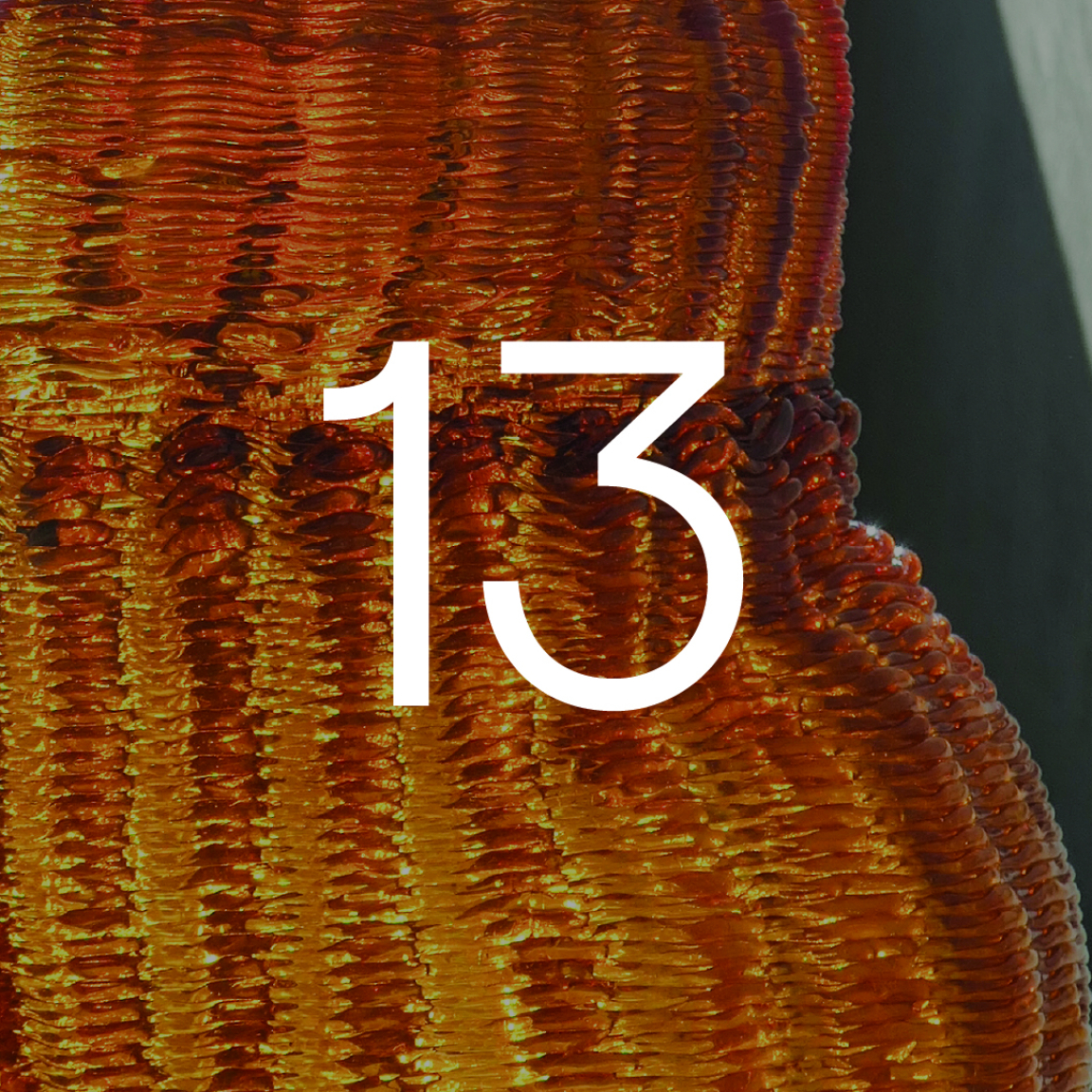
14. StoneCycling & Circular Matters - CornWall®.
Made from primarily corn waste, CornWall® is a sustainable alternative for interior wall cladding developed by StoneCycling.
Both climate positive, biodegradable, and designed to overcome the problem of scarcity, StoneCycling transforms a raw material that is found in abundance. Collaborating with Circular Matters, the power of plants is leveraged to create materials that replace fossil-based plastics and resins.
The initial collection features various colours and textures, and for projects exceeding 1.000 m², Custom Made solutions are offered. Depending on specific requirements, tweaks can be made to colour, texture, and size, allowing for a bespoke wall finishing material to be created every time.
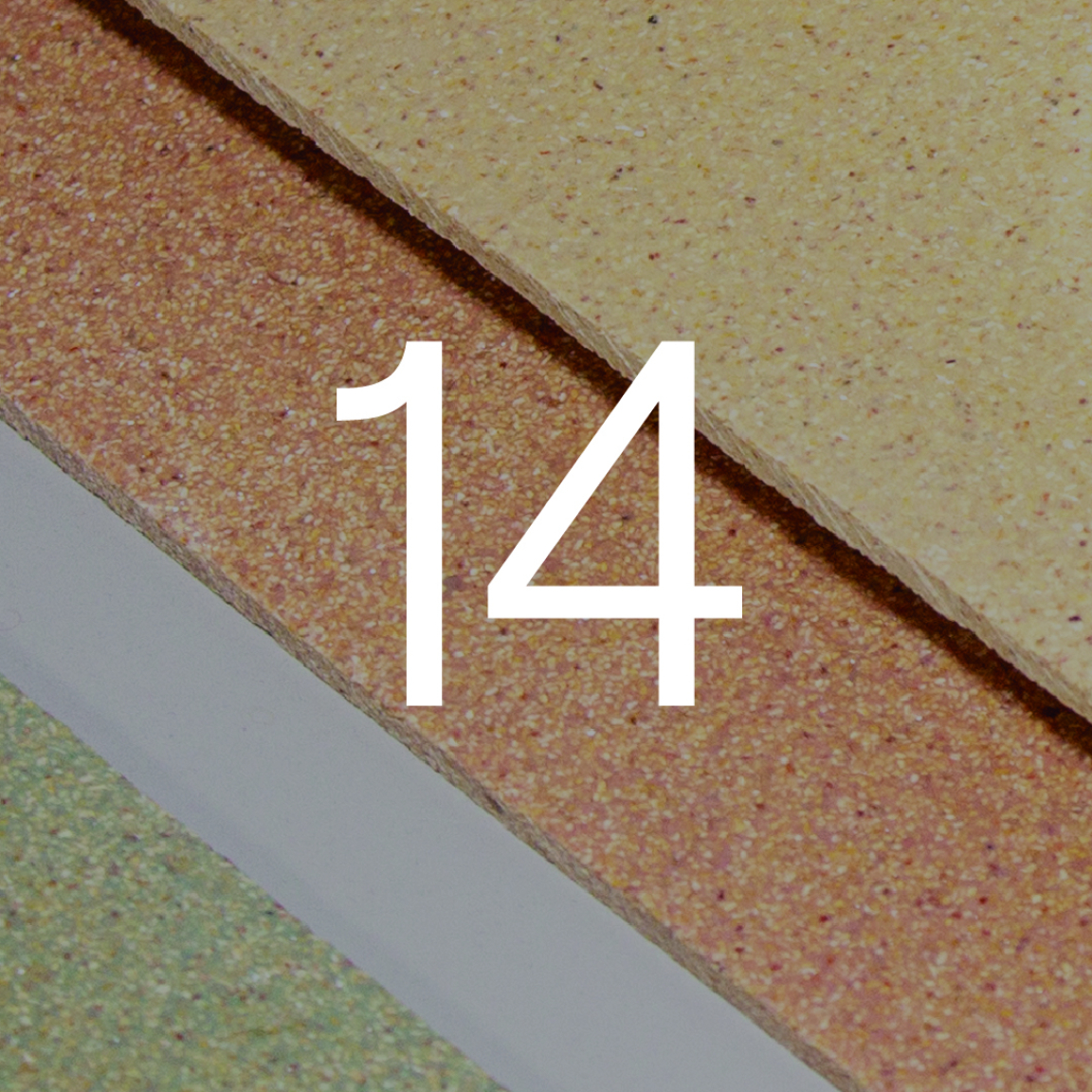
15. Zena Holloway - Rootfull.
Rootfull seeks to "unite design with biology and reconnect humanity with nature". Through contemporary craft, innovation and invention, Zena Holloway grows root into memorable artefacts that cultivate material intelligence and regenerative design.
Rootfull is a pioneering project that grows wheatgrass into templates carved from beeswax to create lamps and acoustic wall hangings from root. Over 12 days the shoot grows to 20cm while the root binds below to form a naturally woven structure.
With sustainability at the heart of the process, the ingredients are organic and locally sourced. Water is reused from runoff and any leftover shoot or seed is eaten as animal fodder. The pieces show that the power of plants is infinitely renewable, and nature’s amazing capabilities are simply waiting for us to tap into.
Root is a fascinating and versatile material to craft and the most honest results are achieved by working with the natural flows of the fibre. Zena grows the material into lamps that seek to shine a light on this hidden natural fibre, to reveal a textile that invites intrigue and wonder at nature's unique capabilities.
Each design combines sustainability, innovation, and bio-sculpture by allowing the root to weave its own path through templates carved from beeswax. Rather like a tree growing, the root takes different paths every time, altering the light and shadow of each lamp to make each one individual.

16. Prometheus Materials - Zero-carbon building products.
Prometheus Materials provides sustainable building materials that accelerate the world’s transition to a carbon-negative future.
According to the team at Prometheus, concrete is the second most consumed substance on Earth and is the most widely used construction material. With traditional cement and concrete production pumping 11 million tons of CO2 into the atmosphere every day — causing 8% of the world’s annual CO2 emissions.
In response, and taking inspiration from nature, the company’s unique process combines naturally occurring microalgae with other essential components to create a bio-cement.
When mixed with aggregate, it forms a zero-carbon bio-concrete with mechanical, physical and thermal properties that are comparable or superior to portland cement-based concrete.
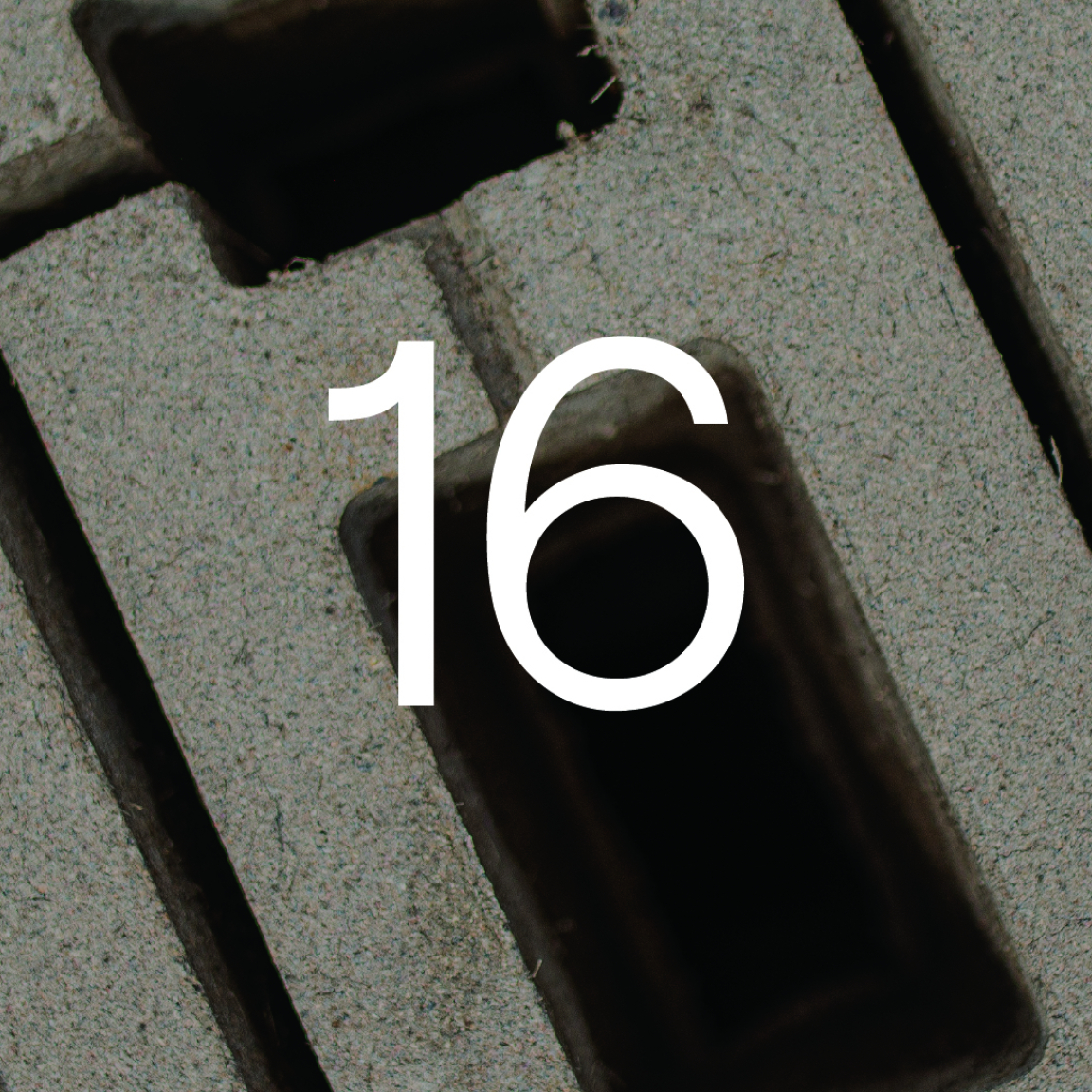
17. Myceen - Mycelium-based materials.
Myceen is a sustainable design and research entity focusing on the development of mushroom mycelium-based materials while valorising industrial leftovers.
Founded in 2021, Myceen started with design objects but has recently turned its attention to developing sustainable building materials.
"While design products are excellent for introducing the material and its properties, building materials are great for making the biggest positive impact on the environment.
"We believe that applying nature’s intelligence makes it possible to change our tangible environment into a more natural and sustainable one."
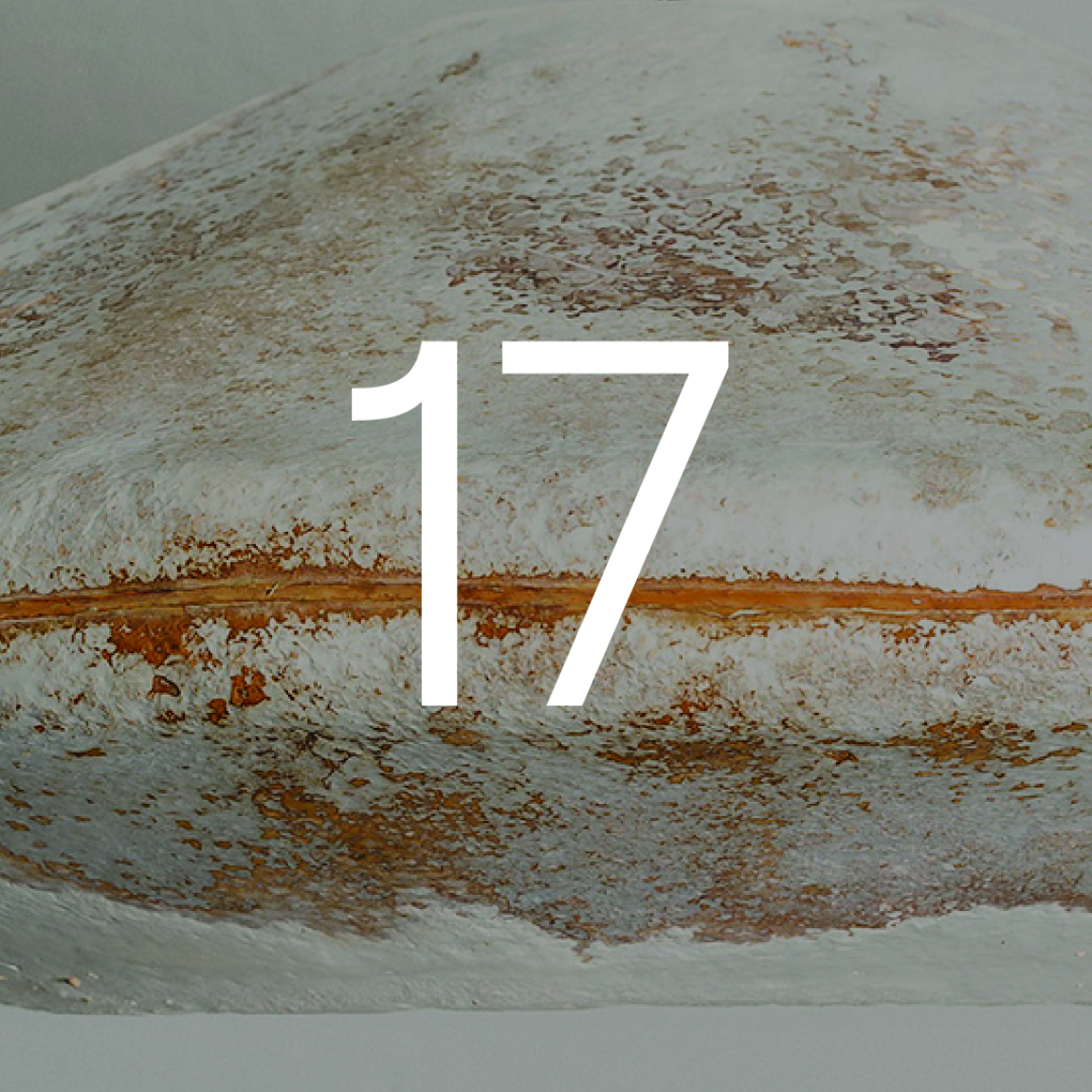
18. PrintCity at Manchester Metropolitan University - 3D printed concrete.
Concrete has been widely criticised for its energy consumption and linear life span. But alternative solutions have been lacking. Until now.
Tackling this ecological crisis is the 3D additive and digital manufacturing hub, PrintCity, at Manchester Metropolitan University.
Housed in the industrial heart of Manchester, their collaborative team of manufacturing experts, designers and engineers continually push the boundaries of 3D printing technology.
PrintCity’s groundbreaking project explores the architectural potential of concrete waste, excavated from construction sites across Europe.
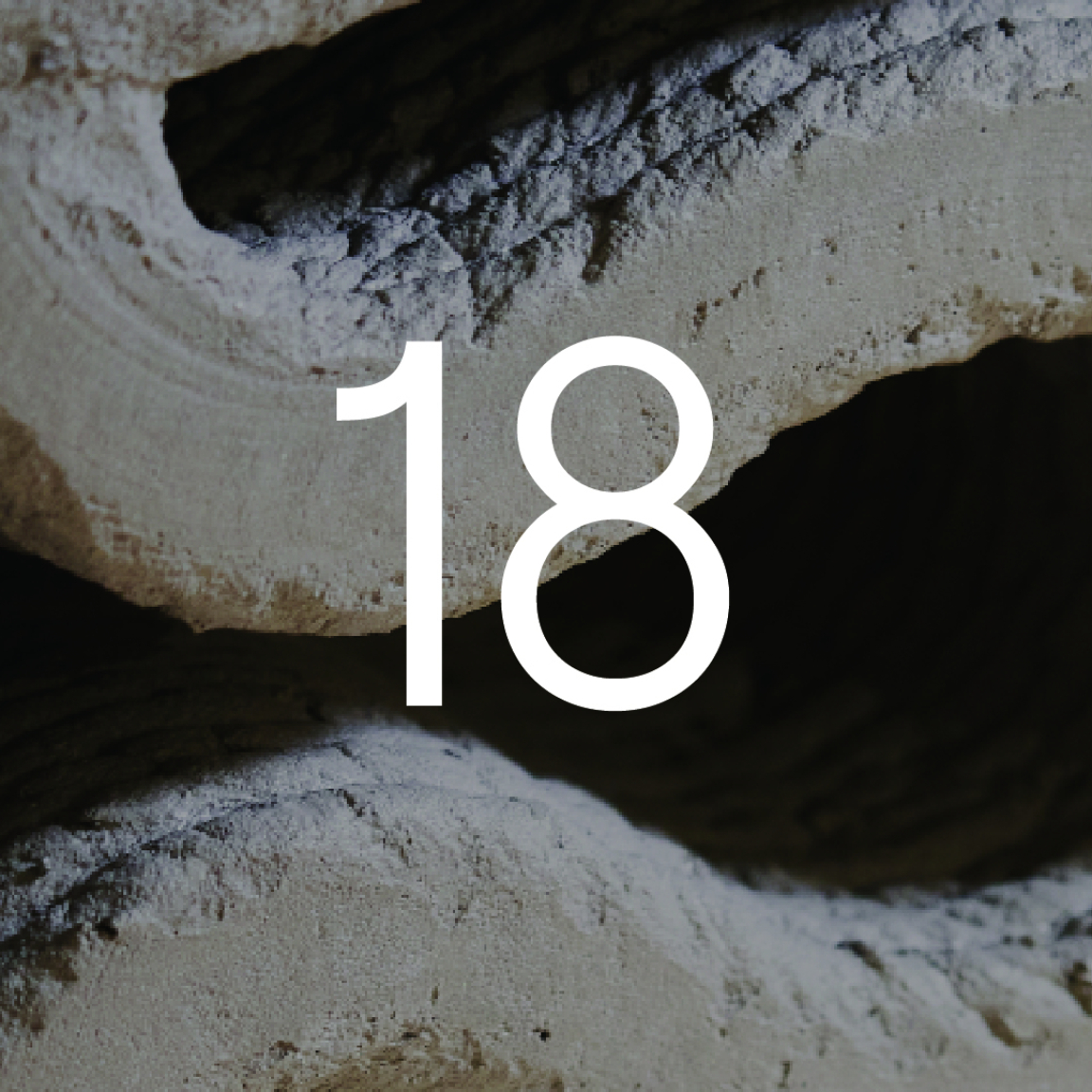
19. DeakinBio - Sustainable tiles.
DeakinBio develops sustainable bio-based alternatives to decorative ceramic tiles.
Inspired by natural materials such as seashells, tooth enamel and pearl, these biomaterials consist of inorganic powders combined with biopolymer binders to produce bio-based composite (biocomposite) materials that look, feel and behave like ceramics.
The lead material, Eralith, consists of >95% calcium sulphate obtained from recycled plaster combined with an organic binder obtained from brewery waste. This means each square meter produced diverts a significant amount of waste from landfill, whilst also having a much lower carbon footprint compared to ordinary ceramic tiles.
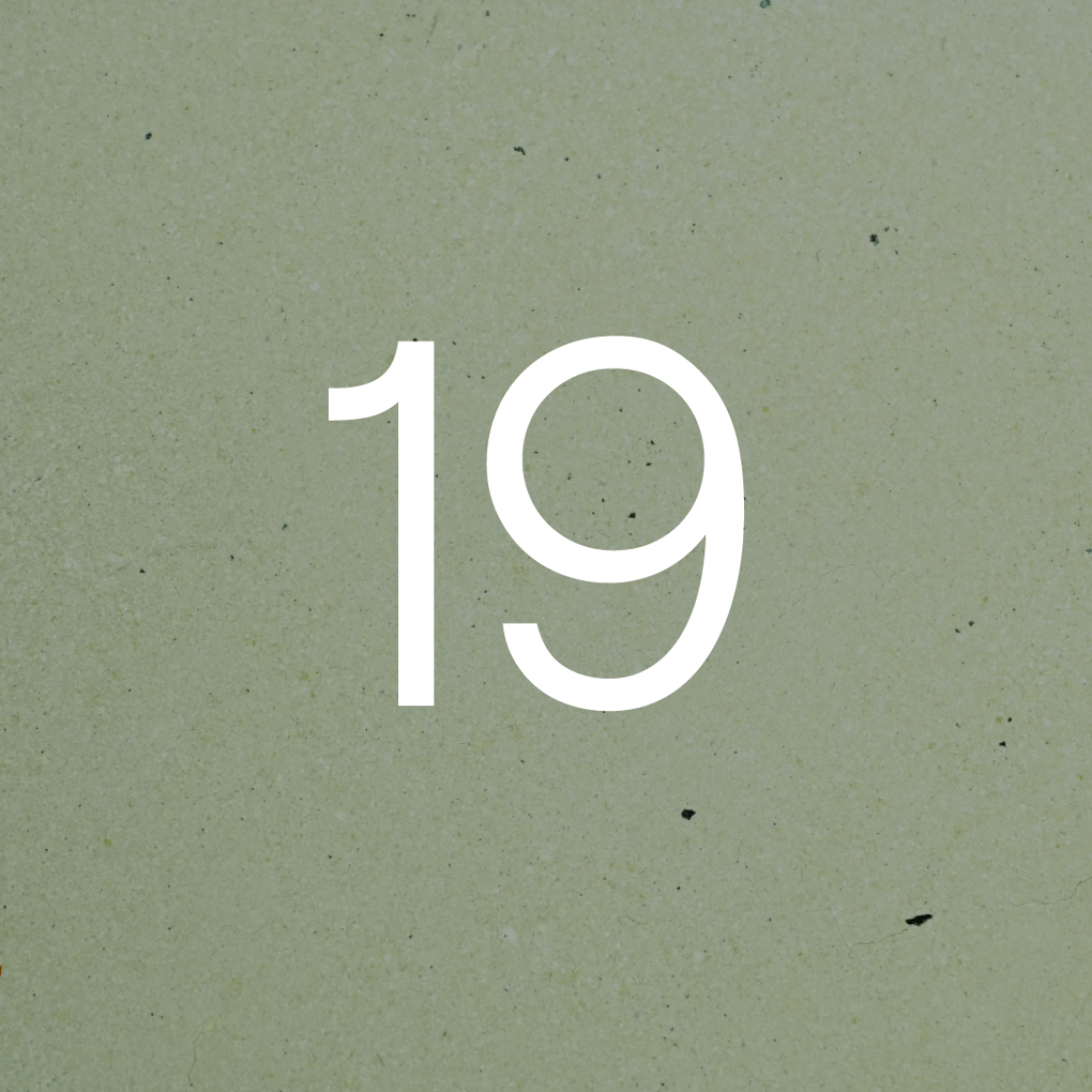
20. Blast Studio - Tree.
Taking inspiration from natural ecosystems, Blast Studio has created a cycle where London’s discarded coffee cups are transformed into unique furniture and architectural elements using 3D printing technologies.
The team has created a series of columns - trees - that were designed using an algorithm inspired by the cross-sections of tree trunks with the aim to shelter living organisms: mycelium, insects and plants.
For its last project, commissioned by WeWantMore Design Studio, for an optician store in Belgium, Blast designed and 3D printed two out-of-this-world columns using mycelium, the root network of fungi.
The two columns have become structures that hold mirrors on one side and display glasses from the shop on the other.
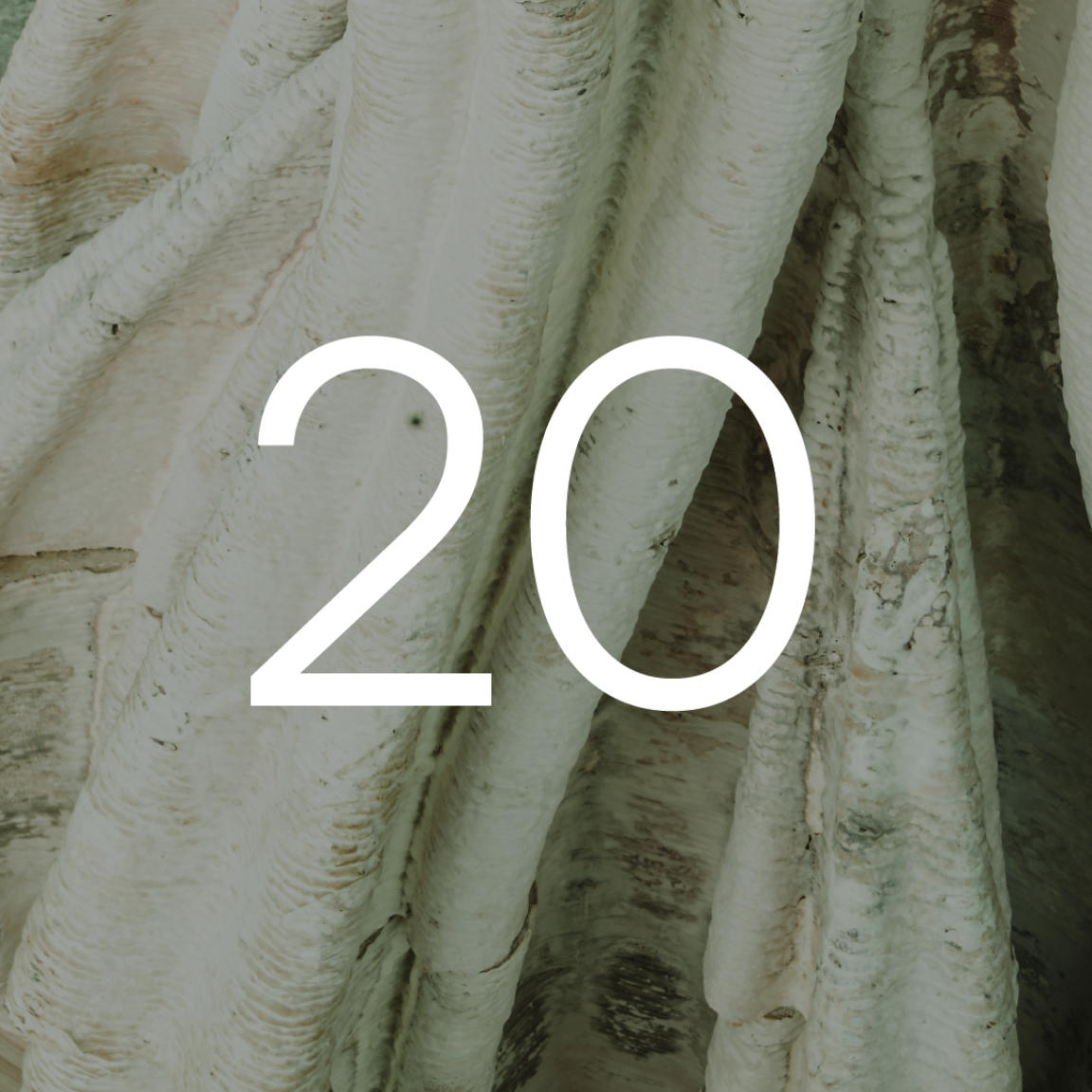
21. Emma Harriet Wright - The Light Switch.
Inspired by the lack of awareness for the afterlife of technology, Emma has steered towards exploring alternative materials and traditional craft techniques within design.
Environmental consciousness permeates her work, emphasising awareness of material origins, usage, and post-use implications. Positioned as a sustainable communicator and innovator in textile design, Emma advocates for holistic design practices, fostering collaboration across disciplines.
Her goal is to empower designers to create environmentally mindful depictions, encouraging a caring approach that respects materials and cultivates balanced cohabitation with everyday objects. Can this active form of care redefine our relationship with the environment?
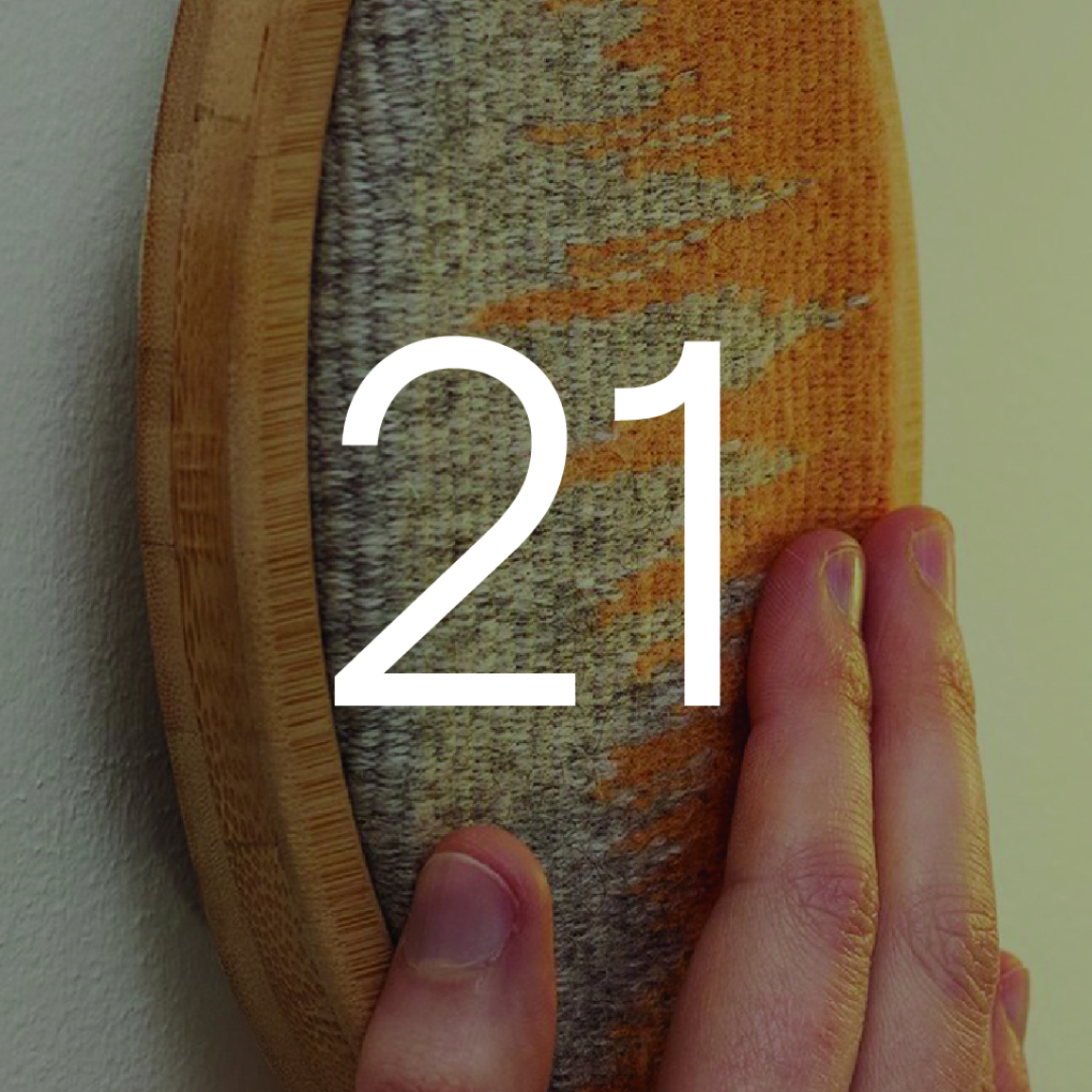
22. Jeffrey Miller - From The Underground.
Tiles are a defining feature of the London Underground, the world’s oldest metro system, yet their material origins are often unknown.
Typically, virgin resources extracted through open-pit mining are used in production. These are made from the waste produced during the construction and operation of the London Underground itself. The materials include naturally forming London clay excavated during tunnel boring and iron oxide-rich dust from train wheels grinding against steel tracks.
The tiles are cast from moulds provided by H&E Smith, a tile manufacturer that refurbishes tiles for the London Underground, and originally designed by Leslie Green, the architect behind many iconic London Underground stations in the early 20th Century. From The Underground offers a juxtaposition to the opaque origins and environmental consequences of ubiquitous materials within our built environment.
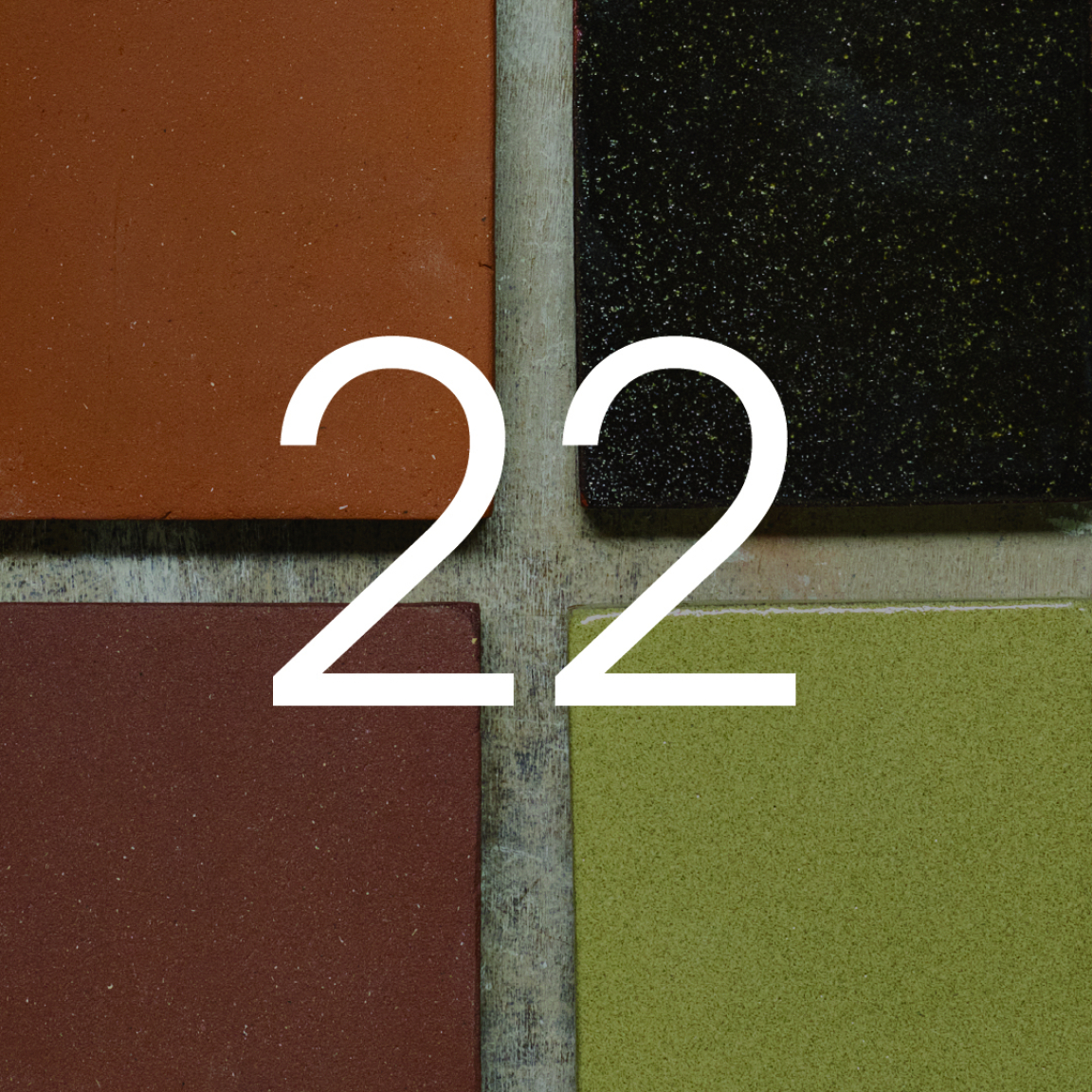
23. Studio Sarmite - (Un)woven.
Can colour make textile waste attractive? When recycling not only fibres but also colour itself – what new production methods emerge?
From marble-like patterns to developing novel dyeing processes for mixed blend unrecyclable textile fibres - Studio Sarmite investigates various waste streams from the textile industry as a resource for creating new material lifecycle concepts.
(Un)woven is a new bio-textile concept made of inferior textile fibres, created as an alternative to the flawed traditional textile recycling process. A unique production method turns inferior mixed blends into a lightweight biotextile suitable for fashion, interior and product design applications. Emphasising recyclability over longevity, the sturdy material can be recycled at the end of its life and repurposed for new production cycles over and over again.
The designer has developed two colour concepts. The marble line reveals new aesthetics and highlights the previous lives of each worn garment through colour and structural nuances. Waste does not have a single tone. Instead, it mesmerizes with depths and patterns that create a complexity visible once looked closer at. Natural pigments are used to further remove the existing stigma of recycled textiles.
Together with Roua Atelier, Studio Sarmite developed a pioneering dyeing method for mixed blends. The dyeing is integrated directly into the making of the biotextile thus leading to a unique design language and subtle, sophisticated colour palette.
(Un)woven is part of a larger project investigating various waste streams from the textile industry. Post-consumer garments, production waste, fibres, dust and even dye waste are seen as a resource for the creation of new material concepts. This project has been funded by the European Commission.
Credits: Studio Sarmite - A design studio for non-heroic materials. Designers Sarmite Polakova and Mara Berzina. In collaboration with Roua Atelier (Roua Alhalabi).
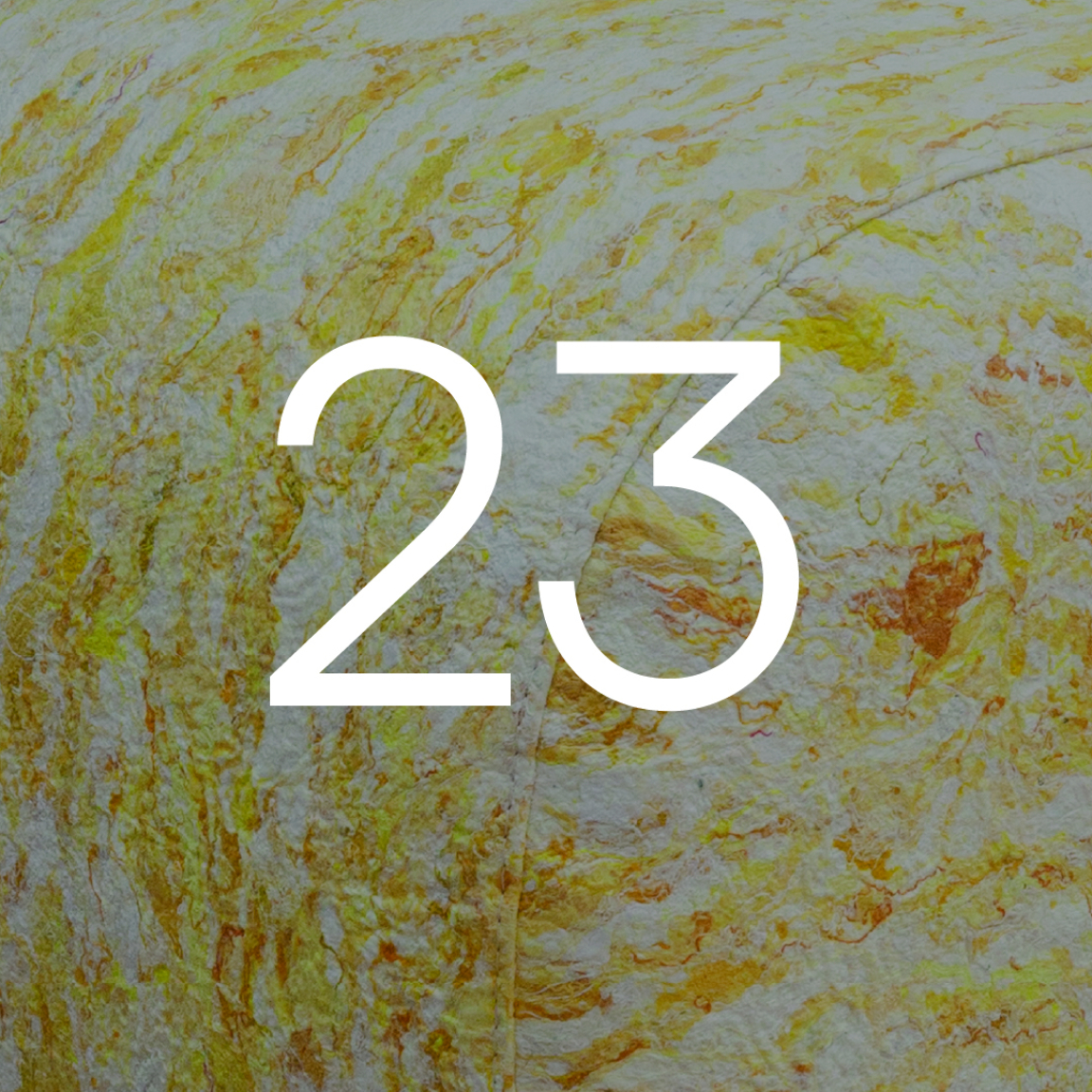
24. Eline van Dijkman - Rubber.
Rubber, a design material, proposes a series of circular furniture made from recycled rubber waste that displays the material’s unique properties and potential.
Van Dijkman created an outdoor set with raw-chunky cut-outs of sheet material that are originally used for the agriculture industry. The furniture features clean lines, sharp angles and a rough unpolished finish, portraying an industrial aesthetic while highlighting visual imperfections of the recycled material.
Working with a company that processes and mechanically recycles rubber worldwide, van Dijkman explored the circular economy of rubber as an opportunity to create new and innovative products which fit into the world of design.
